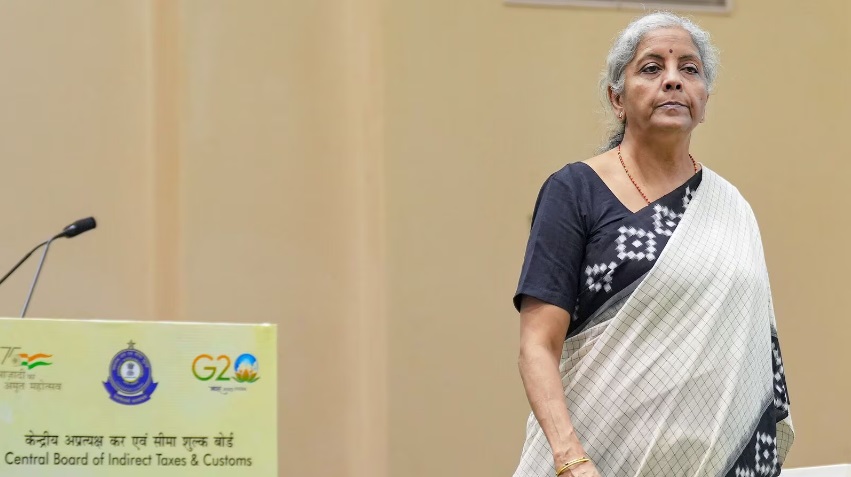
Indian Economy Expected to Grow Near 7% in FY25, Reach $7 Trillion by 2030
Even as the finance ministry expects FY24 economic growth to exceed the central bank’s projection of 7%, it also expects growth in the following year, FY25, to be close to 7%, even though geopolitical risks could lead to supply chain disruptions and a rise in inflation.
Separately, agencies such as the International Monetary Fund and the World Bank have predicted FY25 gross domestic product (GDP) growth in the region of 6.3-6.4%.
The ministry’s latest monthly economic review also said that under reasonable assumptions, India can aspire to become a $7 trillion economy by 2030, adding that in the next three years, the country is expected to become a $5 trillion economy, the third largest in the world, and the government has set a higher goal of becoming a “developed country by 2047.”
India will continue its upward growth trajectory on the back of stable and robust domestic demand, expanding private consumption and investments, and structural reforms, chief economic adviser in the finance ministry, V. Anantha Nageswaran, and his team said in the review that was released by the department of economic affairs on Monday.
“It is eminently possible for the Indian economy to grow in the coming years at a rate above 7% on the strength of the financial sector and other recent and future structural reforms. Only the elevated risk of geopolitical conflicts is an area of concern,” the review said.
The monthly review said that priority areas for future reforms include skilling, learning outcomes, health, energy security, a reduction in the compliance burden for small businesses and gender balancing in the labour force.
Experts agreed that 7% growth in FY25 is achievable. “A growth target of over 7% for FY25 is possible if the government can prevent the depreciation of the rupee,” said Pronab Sen, an economist and former chief statistician of India. “At the moment, the exchange rate is stable with imports being low. But what happens when imports rise? Also, consumption, especially rural consumption, has to improve.”
Sen also said the global economy has by now adjusted to geopolitical factors like the conflicts in Ukraine and Israel. “If there is no other incidence (in FY25), the current outlook is achievable,” he added.
The ministry also said reforms will be more purposeful and fruitful with the full participation of state governments.
Recent events in the Red Sea region may have brought back concerns over reliance on global supply chains, further aggravating the slower growth in global trade in 2023, according to the review report.
However, the Indian economy is better placed than ever to take on these challenges because of the policies adopted and implemented in the last decade, the report added.
While India has witnessed robust growth, the tightening of interest rates in the West, driven by persistent inflation, has resulted in a slowdown in business, investment and trade.
Besides, the escalating conflicts in Ukraine and Israel have threatened commodity shortages, driving up energy prices and intensifying inflationary pressures.
“The global economy is struggling to maintain its recovery post-covid because successive shocks have buffeted it. Some of them, such as supply chain disruptions, have returned in 2024,” the report said.

“If they persist, they will impact trade flows, transportation costs, economic output and inflation worldwide. India will not be exempt from it, but having faced and seen off covid and the energy and commodity price shocks of 2022, India is quietly confident of weathering the emerging disturbances,” it added.
The growth estimates for FY25 come days before the Narendra Modi-led central government will present its final budget for the current term before the country heads to a general election this summer.
Finance minister Nirmala Sitharaman will present the budget on Thursday, 1 February. Mint had reported on 21 January that the government may assume a 7% real GDP growth rate for FY25.
The government will present its Economic Survey for the current financial year only after the general election, when it presents the full-year budget.
As things stand, India is expected to remain the fastest-growing major global economy. According to S&P Global, India is on track to become the world’s third-largest economy by 2030, overtaking Japan and Germany.
Meanwhile, the report said the strength in India’s financial sector and recent structural reforms will aid the Indian economy’s push to grow above 7% in the coming years.
“These reforms have also delivered an economic resilience that the country will need to deal with unanticipated global shocks in the future,” the report said.
The ministry cited the annual Periodic Labour Force Survey by the National Statistical Organisation to say that unemployment rate has declined substantially from 6% in FY18 to 3.2% in FY23, a trend observed across male and female workers in rural and urban areas.
Also, the labour force participation rate has risen from 49.8% in 2017-18 to 57.9% in 2022-23, driven by a surge in rural female labour force participation, the review said.
India expects headline retail inflation to gradually slow, the report added, without specifying any timeframe.
Interestingly, retail inflation rose to 5.69% in December, up from 5.55% the previous month, the steepest monthly rise since August.
During the April-December 2023 period, the highest monthly retail inflation was reported during December, after July and August, with July reporting the highest inflation rate of 7.4% in 15 months due to a sharp rise in prices of vegetables and other food items such as pulses, spices and cereals.


